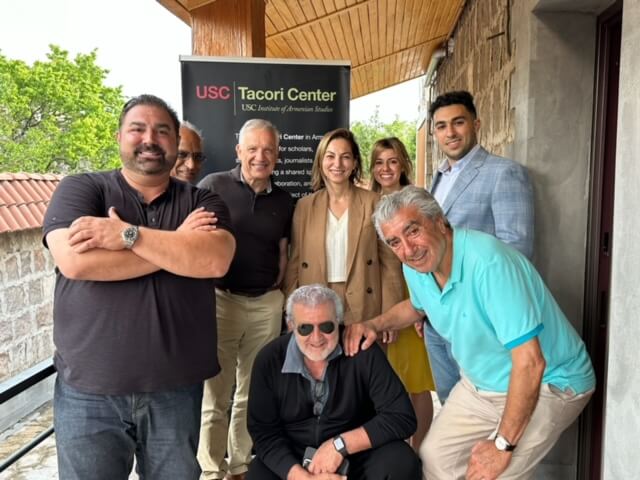
Last month, a delegation from the USC Viterbi School of Engineering visited Armenia. The visit, a first to the Caucasus region for USC Viterbi Dean Yannis C. Yortsos and Viterbi’s Vice Dean of Global Initiatives, Raghu Raghavendra, allowed the school to provide students from National Polytechnic University of Armenia who had taken a USC Viterbi continuing education computer science course earlier in the year, with their earned certificates.

With support from the USC Dornsife Institute of Armenian Studies and the Institute’s chairman Charly Ghalian who helped to organize the trip, Yortsos and Raghavendra were also able to get a close-up look at the country’s academic and tech ecosystems for future collaborations.
Shushan Karapetian, the director of the USC Dornsife Institute of Armenian Studies, describes Armenia as the region’s “Silicon Valley.” Geography plays into this, Karapetian explains. The country is landlocked and not rich in natural resources. “It’s rich in brain power,” she says. Showcasing the technology and engineering prowess of the country, Karapetian says is aligned with the mission of the USC Dornsife Institute for Armenian Studies, which she emphasized highlights contemporary Armenian studies.
One stop on the visit was the Foundation for Armenian Science and Technology (FAST), an organization that functions as an incubator for Armenian innovation, including supporting technology startups and research collaborations. AI researcher Aram Galstyan, who is a Research Professor of Computer Science and Principal Scientist at USC Information Sciences Institute, is one such international scholar whose work is supported by FAST.

Another stop on this expedition was the American University of Armenia (AUA) where USC Viterbi’s leadership met with interim President Armen Kiureghian, and the Dean of Science and Engineering Aram Hajian. The founding president of AUA, was Mihran Agbabian, a former Viterbi faculty and former chair of Civil and Environmental Engineering at USC.

The USC delegation also traveled to the TUMO Center, which houses a free after-school program for students, aged 12-18. More than 15,000 students attend after-school programs at the Yerevan TUMO Center. A number of TUMO centers have also been established across Armenia and many cities across the world.
Dean Yortsos said of his experience, “It was exciting to visit these universities and institutions in Armenia and explore possibilities for future partnerships and exchange. We look forward to future collaborations.”
The delegation also visited the Tacori Center, which Karapetian describes as the USC Dornsife Institute for Armenian Studies’ “academic hub” for “research, collaboration and creation.”

Published on July 6th, 2023
Last updated on July 7th, 2023











